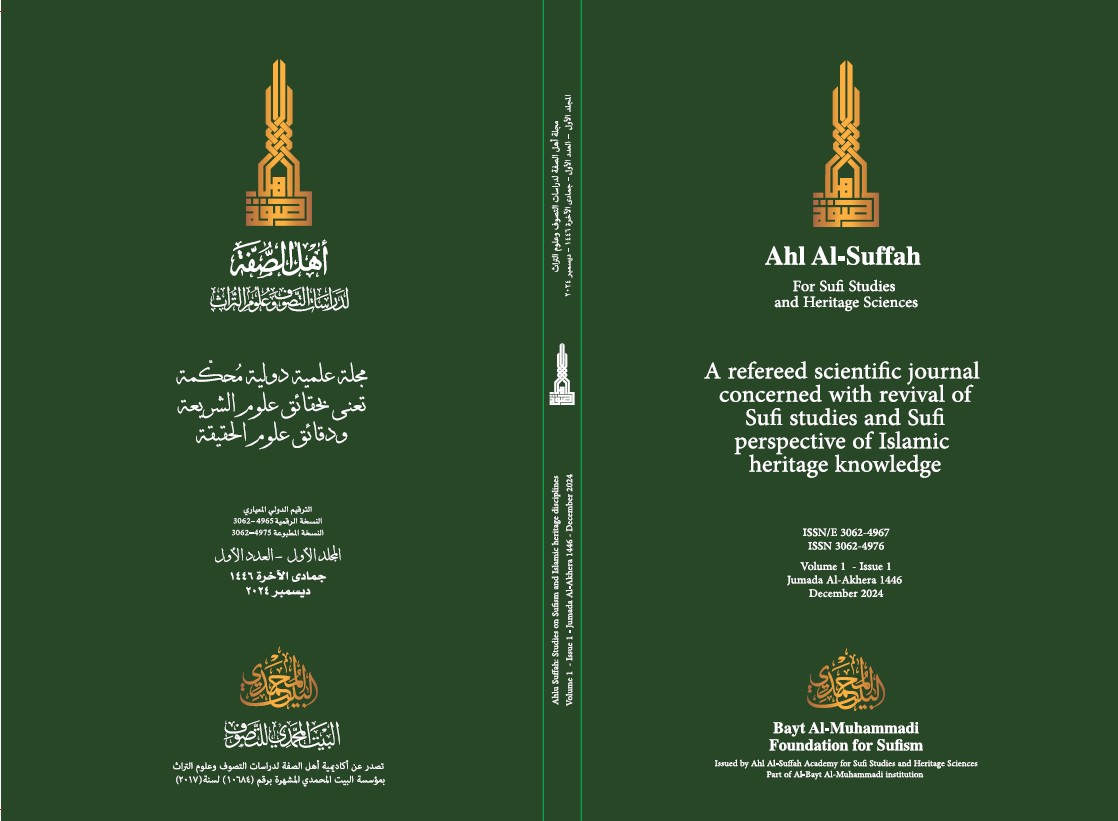SAINTHOOD IN RELIGIOUS, SOCIAL AND POLITICAL CONTEXT: A COMPARATIVE STUDY BETWEEN EGYPTIAN AND PAKISTANI SUFI MODELS
DOI:
https://doi.org/10.70703/3sb7xh74Keywords:
Sufism, Sainthood, Egypt, Pakistan, Comparative Study, Mysticism, Shrines, Pirs, AwliyaAbstract
This comparative study explores the concept of sainthood within Egyptian and Pakistani Sufi traditions from the 20th century onward. While Sufism has significantly shaped the religious and cultural landscapes of both regions, the expression of sainthood in each context reveals both commonalities and unique distinctions. The study examines key dimensions of sainthood, including political engagement, social activism, religious authority, spirituality, ascetic practices, the role of female saints, shrine culture, miracles, and the influence of charisma. Through a systematic comparison, the paper uncovers notable similarities, such as the establishment of shrines, the observance of annual festivals, the emphasis on asceticism and piety, and the belief in saints' spiritual guidance and blessings. At the same time, it identifies important differences, particularly in the terminology used, the geographical extent of saints' influence, and attitudes toward mystical traditions in other religions. The study argues that a comparative approach provides a valuable framework for fostering dialogue and mutual understanding between these distinct Sufi communities. By examining the interconnections between South Asian and Middle Eastern Sufi traditions, this research contributes to the broader field of comparative cultural studies and deepens scholarly discussions on Sufism and sainthood across diverse cultural contexts.
Downloads
References
Al-Qushayri, Abu al-Qasim. Al-Qushayri's Epistle on Sufism. Trans. Alexander Kynsh. UK: Garnet Publishing Limited, 2007.
Barakah, Abdul-Fattah. Al-hakīm al-Tirmidhī and His Theory in Wilayah. Cairo: Majma al-Buhuth al-Islamiyah, 2001.
Cornell, Vincent, Realm of the Saint: Power and Authority in Moroccan Sufism. Texas: University of Texas Press, 1998.
Ernst, Carl. Shambhala Guide to Sufism. USA: Shambhala Publication, 1997.
Eaton, R. M. Sufis of Bijapur, 1300-1 700: Social Roles of Sufis in Medieval India. Princeton: Princeton University Press, 1978.
Ewing, Katherine. The Politics of Sufism: Redefining the Saints of Pakistan, Association for Asian Studies, 1983.
Green, Nile. Sufism A global history. USA, UK: Blackwell Publishing, 2012.
Holdrege, Barbara A. Veda and Torah : Transcending the Textuality of Scripture. Albany, N.Y.: State University of New York Press, 1996.
Holdrege, Barbra. Politics of comparison, International Journal of Hindu Studies, 2010
Hoffman, Valarie J. Sufism, Mystics and Saints in Modern Egypt. Colombia: University of South Carolina Press, 1995.Hassan, Riaz. Religion, Society, and the State in Pakistan: Pirs and Politics, Asian Survey, University of California Press, Vol. 27, No. 5 May, 1987.
Hegazy, Wael. Excessive Expenditure in Islamic Context, Two Models: Sufism and Shiism, unpublished article, fall 2018.
Hegazy, Wael. “The Salience of Saintliness in Islam: A Sufi Perspective.” Teosofi: Jurnal Tasawuf dan Pemikiran Islam 11, no. 1 (2021): 1–19.
James, William. The Varieties of Religious Experience. London: Routledge, 2002.
Mayer, Adrian C. Pir and Murshid: an Aspect of Religious Leadership in West Pakistan, Middle Eastern Studies, Vol. 3, No. 2, Jan., 1967.
McGregoer, Richard J.A. Sanctity and Mysticism in Medieval Egypt. New York: State University of New York Press, 2004.
McAuliffe, Jane Dammen. Encyclopedia of the Qurʾān, Radtke, B, "Saints". Leiden: Brill, 2001.
McGregoer, Richard J.A. Sanctity and Mysticism in Medieval Egypt. New York: State University of New York Press, 2004.
Ladjal, Tarek. Sufism and Politics in Contemporary Egypt: A Study of Sufi Political Engagement in the Pre and Post-revolutionary Reality of January 2011, JAAS: Journal of Asian and African Studies, 2014.
Pemberton, Kelly. Women Pirs, Saintly Succession, and Spiritual Guidance in South Asian Sufism, The Muslim World, Volume 96, Issue 1, Jan. 2006.
Roded, Ruth. Women in Islamic Biographical Collections: From Ibn Sa“d to Who’s Who. Boulder and London: Lynne Rienner Publishers, 1994.
Pemberton, Kelly. Women Pirs, Saintly Succession, and Spiritual Guidance in South Asian Sufism, The Muslim World, Volume 96, Issue 1, Jan. 2006.
Roded, Ruth. Women in Islamic Biographical Collections: From Ibn Sa“d to Who’s Who. Boulder and London: Lynne Rienner Publishers, 1994.
Schimmel, Annemarie. Mystical Dimension of Islam, USA: University of North Carolina Press, 1975.
Downloads
Published
Issue
Section
License
Copyright (c) 2024 Ahl alSuffa for Sufi Studies and Heritage Sciences

This work is licensed under a Creative Commons Attribution 4.0 International License.






